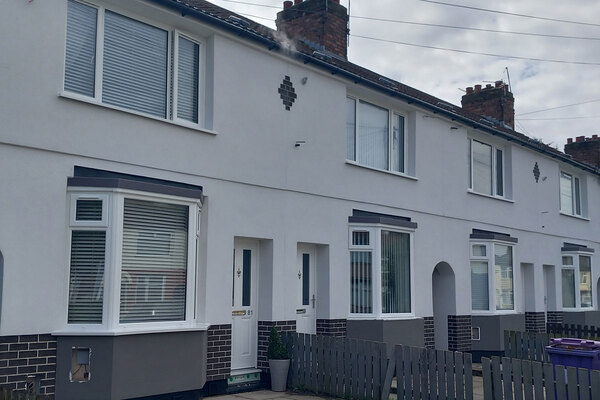Green Gains: Measuring success
Housing Associations have an abundance of data, but is this data holistic enough to demonstrate the true value of quality green space? Sam Jones explores...
When housing association leaders met in July to consider the added value a ‘green community’ approach can bring to social landlords and their customers they all agreed, there is no shortage of data.
In fact, the consensus was that there is an abundance of it. The Green Futures Partnership is leading work within the sector to improve the way that data is used to understand the net zero journey. However, it was identified that what is missing is a single, credible measure for sustainable green placemaking that goes far beyond habitat creation to include wider biodiversity and sustainability value enhancements.
Peabody’s Green Infrastructure Framework, which captures the housing association’s strategic approach to managing and utilising the unique blue and green spaces of Thamesmead, demonstrates the value of quality data.
At the Green Communities Summit, Lord Kerslake explained that this approach has helped Peabody to identify the many benefits and the beneficiaries from investment in green infrastructure. “We know that time spent in green space significantly improves quality of life: as little as 15 minutes in green space just four times a week is worth at least £900 a year to each user in terms of wellbeing.”
“We should look at our green assets and catalogue them by function, location, size and use. This will help us to develop a set of holistic data measurements that take into account carbon capture and customer health and wellbeing.”
Said Nusheen Hussain, Home Group and Green Futures Partnership.
This can all sound rather daunting, but it needn’t be. Housing association leaders agreed on these six learnings, identified as best practice:
- don’t wait for your data to be perfect, you will have enough to make good judgements on carbon reduction and biodiversity enhancement actions
- look at green assets with the same level of scrutiny as property data
- consider a wide range of holistic green space measurement factors including, improved air quality, reduction in temperature in densely populated urban areas, better water management, reduction in anti-social behaviour, health, wellbeing and biodiversity
- use Natural England’s Biodiversity Metric 3.0 as a starting point to measure and account for nature losses and gains and get closer to a 10%+ biodiversity net gain on new residential development sites
- be informed by the Greener Futures Partnership approach, as members use amalgamated data for customers homes and green assets to inform plans identify opportunities to develop practical, measurable approaches with the support of a robust supplier network.
Is the abundance of data holistic enough to demonstrate the true value of quality green space? Not quite, but it’s getting there. In our experience, most housing associations have enough data to begin to make decisions on carbon reduction and biodiversity enhancement. And, as we continue to collaborate with industry leaders and the Cambridge University’s Institute for Sustainable Leadership, science-based, verifiable measures will come. It’s all part of our aim to inform green community planning, and help housing association partners make informed decisions around habitat creation, biodiversity net gain and carbon sequestration.
Join us! Putting biodiversity at the fore of UK housing
Housing 2021 Thursday 9th September - 10.50-11.35
Sam Jones, Housing Sector Lead, Ground Control joins a panel at Housing 2021 discussing the role green spaces play for the community. Hear from Sue Riddlestone, chief executive, Bioregional, Dusty Gedge, president, European Federation of Green Roofs and Walls, Chris Murray, head of strategic planning, Hampshire Council County (invited), and Clarion.



